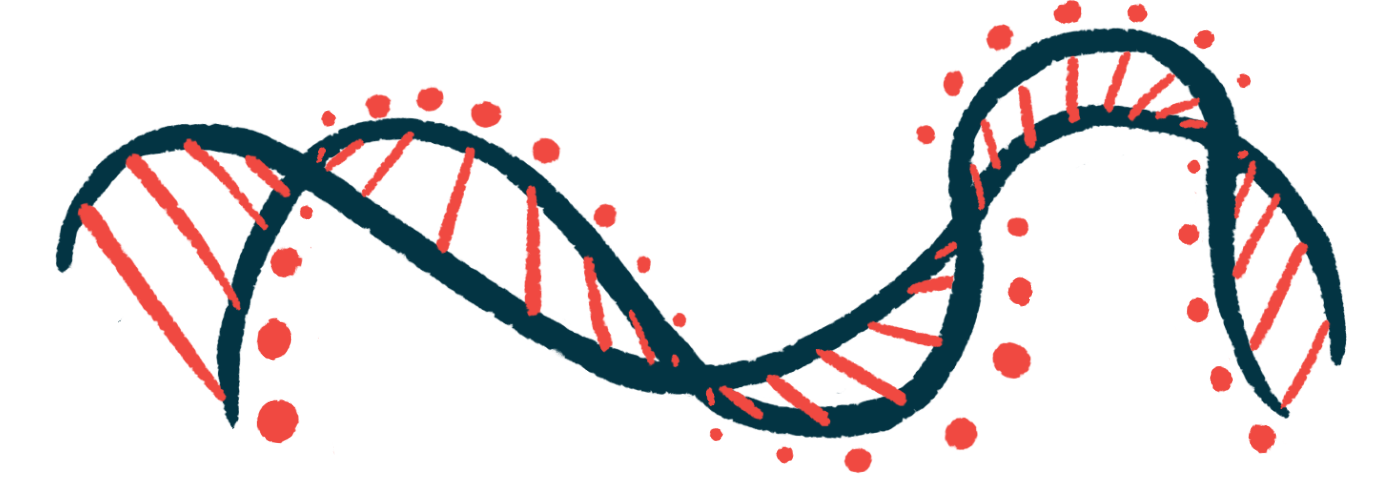Use of gene-editing tool corrects Pompe mutations in patient cells
New approach shows potential as 'efficacious, long-term therapy'
Written by |

Researchers in the U.S. used a gene-editing tool in the lab to correct mutations known to cause infantile-onset Pompe disease, and this enabled patient-derived cells to produce a working version of the acid alpha-glucosidase (GAA) enzyme they lacked.
The approach “may offer an efficacious, long-term therapy,” the researchers wrote, adding that its “safety and feasibility will be explored going forward.”
Their work was detailed in “Base editing rescues acid [alpha]-glucosidase function in infantile-onset Pompe disease patient-derived cells,” a study published in Molecular Therapy Nucleic Acids.
In Pompe disease, mutations in the GAA gene result in no or a faulty GAA enzyme that does not break down glycogen, a large sugar molecule, as it normally does. This causes glycogen to build up to a toxic level in lysosomes, the cells’ recycling centers, leading to the disease’s symptoms.
Available enzyme replacement therapy can supply a working version of GAA to replace the faulty one. However, it requires lifelong, regular infusions, and it may not work well for everyone. Correcting the mutations, in contrast, would address the cause of the disease at once.
Gene-editing tool, used in cells, will now be tested in mouse models
To test this approach, the researchers used an adenine base editor or ABE — a type of gene-editing tool that can make precise changes to DNA. It works by converting one specific nucleotide, or a building block of the genetic code, into another.
First, the team identified three mutations in the GAA gene — c.2227C>T, c.2560C>T, and c.2608C>T — that can be targeted by ABE. These mutations are known to cause infantile-onset Pompe disease, in which symptoms appear within the first few months of life.
Cells were isolated from the skin of three children with infantile-onset Pompe disease; each child carried one of the three mutations. In the lab, the cells were modified by inserting a gene with the instructions to produce ABE and a guide molecule to lead the way to the specific point in DNA that ABE needs to correct.
When the researchers looked at how many cells had their mutation correct, they found that most cells (96%) with the c.2227C>T mutation had the right editing. For c.2608C>T, the proportion of cells with the right editing was 68%. For c.2560C>T, the most common mutation causing infantile-onset Pompe disease, it was 32%.
[Gene-editing tool] was found to efficiently correct all three variants [mutations], leading to the production of functional GAA enzyme, with minimal off-target editing.
These mutations are located in a region in which no other potential targets are present within the editing window, minimizing the risk of off-target or unintended changes.
“ABE was found to efficiently correct all three variants [mutations], leading to the production of functional GAA enzyme, with minimal off-target editing,” the researchers wrote.
After editing, production of the GAA enzyme increased to about 66% of the normal level. At about one month, the enzyme’s activity was between 82 to 130 units per milligram of protein, “which falls within the normal range,” according to the researchers.
In the cells where GAA enzyme levels were higher, the level of the LAMP2 protein, involved in the degradation of proteins in response to stress, was significantly decreased. Like GAA, LAMP2 is found in lysosomes, the compartments in cells that break down and recycle molecules.
“Future work will assess base editing outcomes and impact on Pompe pathology [disease mechanisms] in two mouse models,” the researchers wrote. These mice will be engineered to carry the c.2227C>T or c.2560C>T mutation, the team noted.






